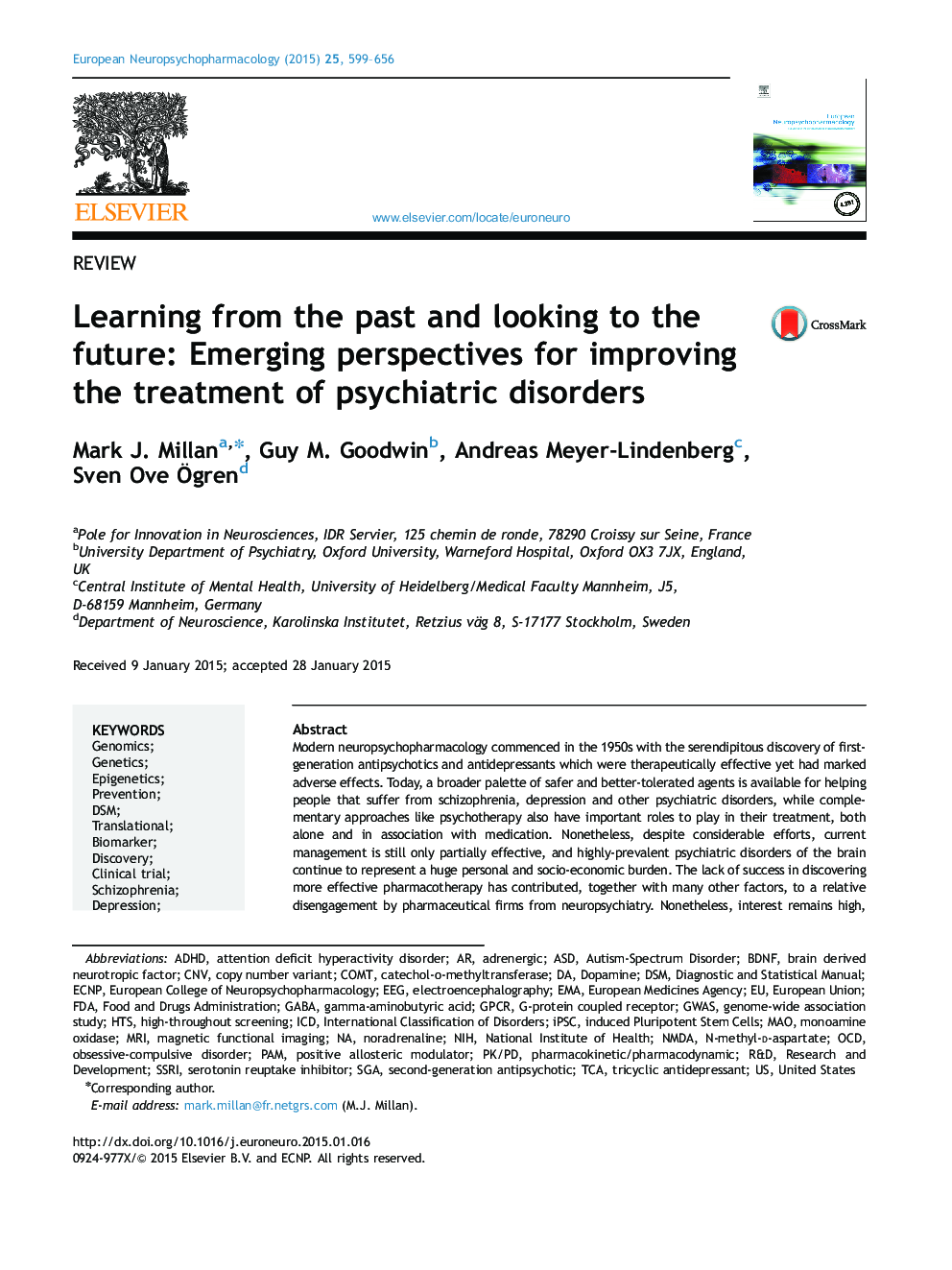| Article ID | Journal | Published Year | Pages | File Type |
|---|---|---|---|---|
| 10298652 | European Neuropsychopharmacology | 2015 | 58 Pages |
Abstract
Modern neuropsychopharmacology commenced in the 1950s with the serendipitous discovery of first-generation antipsychotics and antidepressants which were therapeutically effective yet had marked adverse effects. Today, a broader palette of safer and better-tolerated agents is available for helping people that suffer from schizophrenia, depression and other psychiatric disorders, while complementary approaches like psychotherapy also have important roles to play in their treatment, both alone and in association with medication. Nonetheless, despite considerable efforts, current management is still only partially effective, and highly-prevalent psychiatric disorders of the brain continue to represent a huge personal and socio-economic burden. The lack of success in discovering more effective pharmacotherapy has contributed, together with many other factors, to a relative disengagement by pharmaceutical firms from neuropsychiatry. Nonetheless, interest remains high, and partnerships are proliferating with academic centres which are increasingly integrating drug discovery and translational research into their traditional activities. This is, then, a time of transition and an opportune moment to thoroughly survey the field. Accordingly, the present paper, first, chronicles the discovery and development of psychotropic agents, focusing in particular on their mechanisms of action and therapeutic utility, and how problems faced were eventually overcome. Second, it discusses the lessons learned from past successes and failures, and how they are being applied to promote future progress. Third, it comprehensively surveys emerging strategies that are (1), improving our understanding of the diagnosis and classification of psychiatric disorders; (2), deepening knowledge of their underlying risk factors and pathophysiological substrates; (3), refining cellular and animal models for discovery and validation of novel therapeutic agents; (4), improving the design and outcome of clinical trials; (5), moving towards reliable biomarkers of patient subpopulations and medication efficacy and (6), promoting collaborative approaches to innovation by uniting key partners from the regulators, industry and academia to patients. Notwithstanding the challenges ahead, the many changes and ideas articulated herein provide new hope and something of a framework for progress towards the improved prevention and relief of psychiatric and other CNS disorders, an urgent mission for our Century.
Keywords
CNVFDAIPSCMAOCOMTGPCREMACatechol-O-methyltransferaseDSMHTSBDNFG-protein coupled receptoradrenergicEuropean Medicines agencyEuropean UnionAutism-spectrum disorderattention deficit hyperactivity disorderFood and Drugs Administrationgamma-aminobutyric acidElectroencephalographyMRIADHDICDDopamineDiagnostic and Statistical ManualInduced pluripotent stem cellsbrain derived neurotropic factorGenome-wide association studyGWASmonoamine oxidaseCopy number variantASDEEGGABA
Related Topics
Life Sciences
Neuroscience
Biological Psychiatry
Authors
Mark J. Millan, Guy M. Goodwin, Andreas Meyer-Lindenberg, Sven Ove Ãgren,
